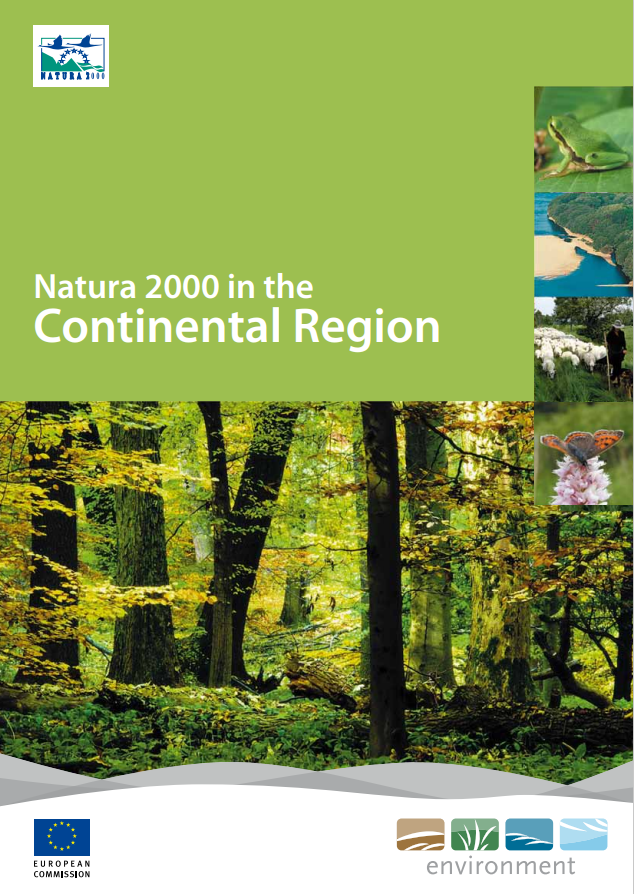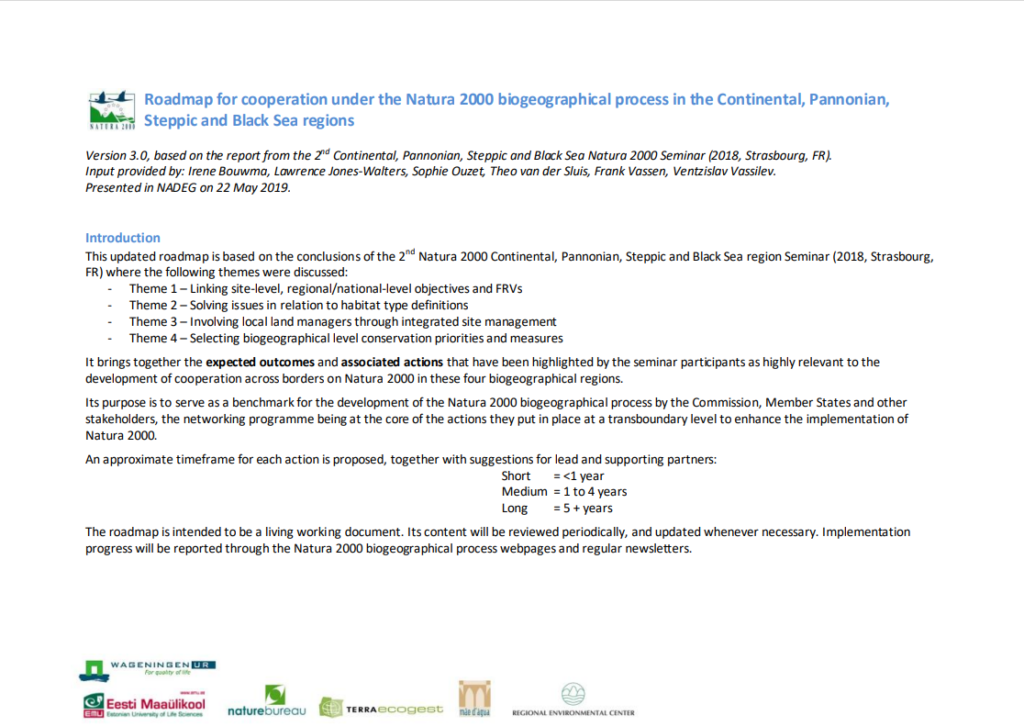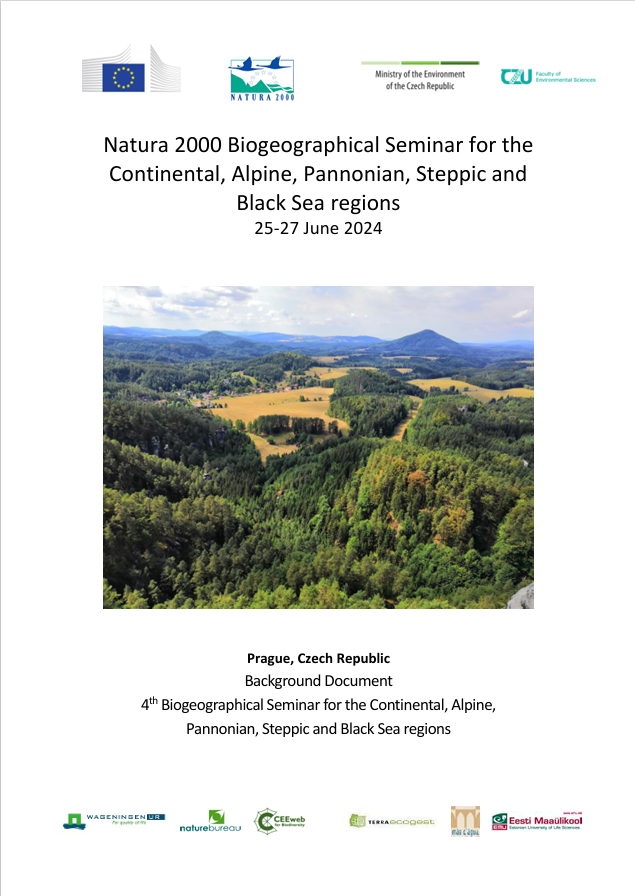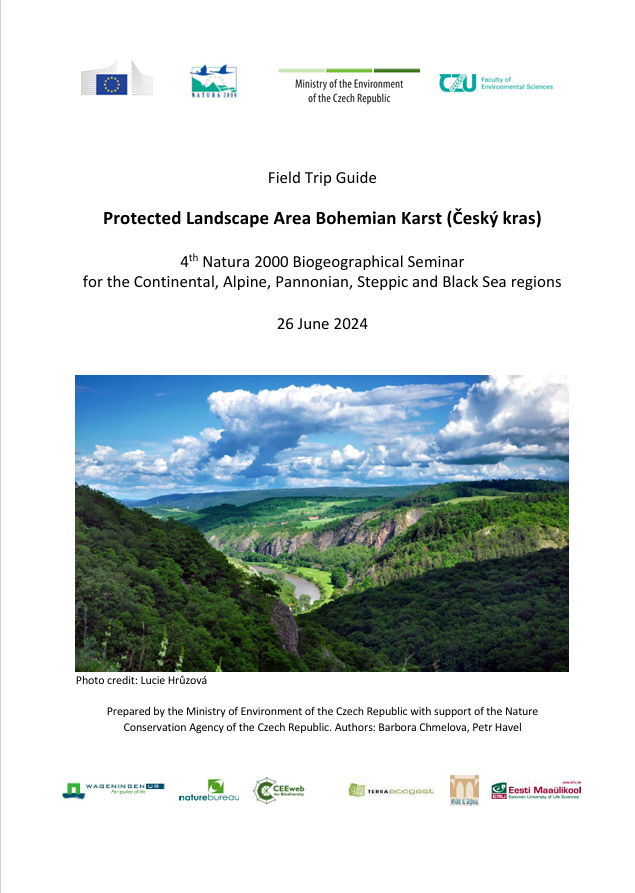Continental region
Countries within the Continental region include Austria, Belgium, Bulgaria, Croatia, Czech Republic, Germany, Denmark, France, Italy, Luxembourg, Poland, Romania, Slovenia and Sweden.
In previous years, events for the Continental, Pannonian, Black Sea and Steppic regions were combined.
The documents from the first seminar (June 2015) and second seminar (October 2018) can be found here.
The Continental Region covers over a quarter of the European Union and extends in a broad band from west to east, starting in central France and continuing to the eastern edge of Poland in the north and Romania in the south. Outside the EU it stretches to the Ural mountains, on the border with Asia. In the south, the region is almost split in two by the high mountain ranges of the Alpine zone and the steppic plains of the Pannonian Region. Parts of the Adriatic and Baltic coastlines are also included.
The landscape of the Continental Region is generally flat in the north and hillier in the south, with the exception of the extensive floodplains in the Po and Danube basins. The Great North European Plain covers much of northern Germany, Denmark, Poland and Russia. Formed by advancing and retreating glaciers, this vast area was once covered in lowland deciduous beech forests, interspersed with extensive floodplains, marshland and bogs. However, much of this forest has since been cleared for fuel and timber and replaced by large scale agricultural production.
Some of Europe’s most important rivers flow through the Continental Region like the Danube, Loire, Rhine, Po, Elbe, Oder, Vistula. These rivers have played a major economic role over the years connecting the north and the south through internal waterways. As a result, most have been canalised and regulated, leading to a dramatic loss of extensive areas of floodplain habitats and species.
Despite these transformations, the Continental Region is still relatively rich in biodiversity. Being at the crossroads between so many different biogeographical zones, it shares many species with other regions.
The 2024 Continental Seminar took place on 25-27 June 2024 in Prague
Seminar Presentations
Welcome to the Continental Seminar
Michael Komarek
Faculty of Environmental Sciences
Michael Komarek
Overview of the Second Continental Seminar
Theo van der Sluis
The LIFE Programme and Natura 2000
Jan Silva
Conservation Status Pledges
Italy’s Approach
D. Angelis and F. Pani
Belgium’s Approach
Lionel Wibail
Denmark’s Approach
Linda Solveig Hau Andersen
Theme 1: Protected Area Pledges
Inventory, Overview and Distance to Target
Mette Lund
Implementation of the pledge in Luxembourg
Elisabeth Kirsch
Implementation of the PA targets in Germany
Eva Flinkerbusch
Protected Area Pledge by the Czech Republic
Eva Knizatkova
Designing a coherent and resilient network
NaturaConnect
Tool for setting Priorities in Nature Protection
Dušan Romportl
Selection of key SPAs supporting migration on the EAF
Valasiuk et al.
Field Excursion Information:
Protected Landscape Area Bohemian Karst
Theme 2: Restoration Actions for Grasslands in Protected Areas
Grassland Restoration: The White Carpathian Mts
Ivana Jongepierová
Eliminating invasive species: Šumava NP
Kateřina B. Bímová
Restoration of Pannonic Grasslands
C. Vadász & Z. Zsembery
Restoration actions
for grasslands
Liselott Sjödin Skarp
EU LIFE Programme: “LIFE Connexions“
Sarah Wautelet
Theme 3: Using OECMs to Safeguard Biodiversity
OECMs: Definitions and Applications
Iva Obretenova
Empowering Land Managers for Action
Delphine Dupeux
Other Effective area-based Conservation Measures
Olivier Hymas
Nature restoration for Birds and People
Břeněk Michálek
Breakout Group Discussions





